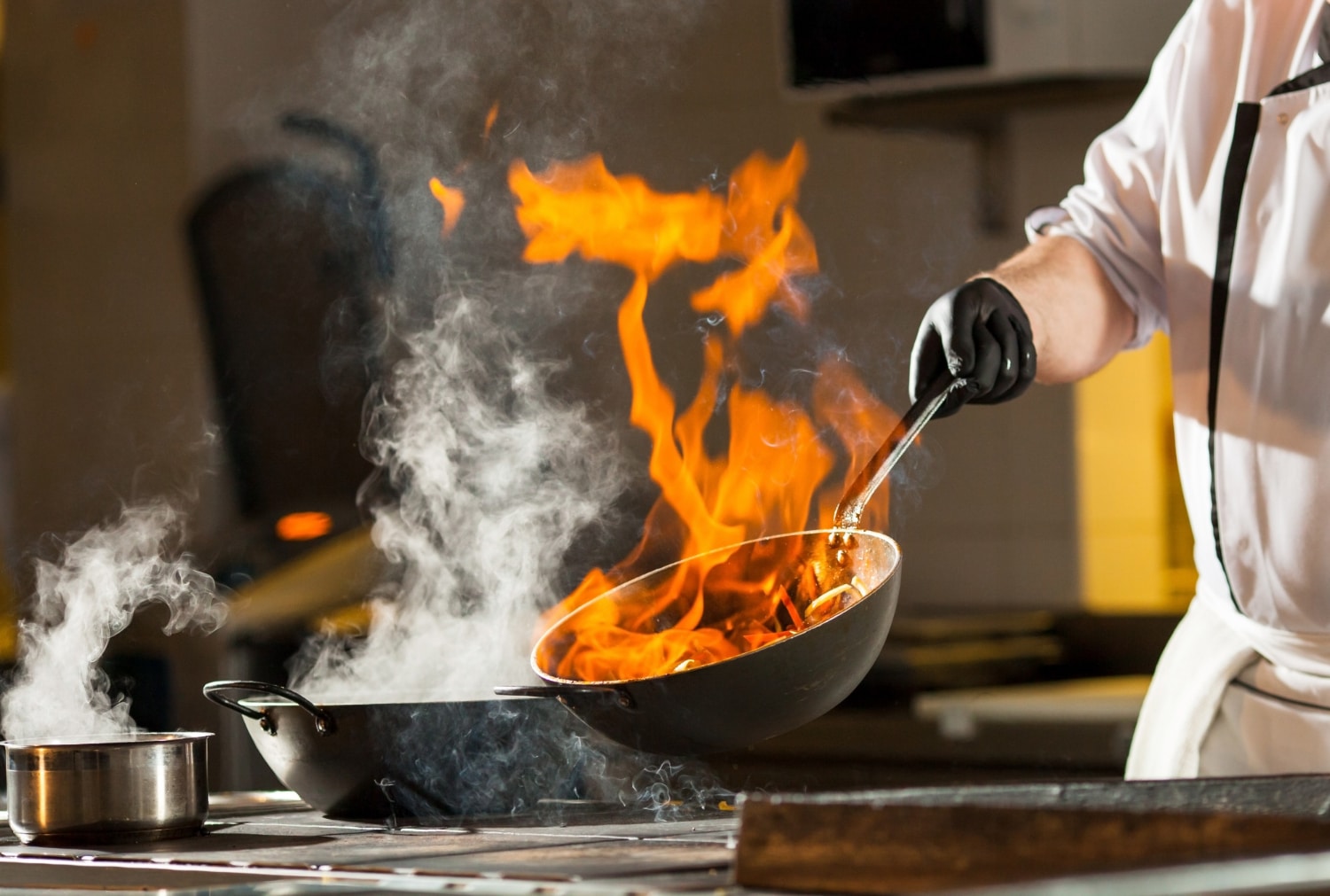If you are interested in upgrading your modern cookware, you may be wondering if you need to buy a wok or a sauté pan. Both are handy cookware, and to maximize their usefulness; you need to be sure if you need them and how to use them, specifically. It can be challenging to prioritize which cookware to buy first and which ones to de-prioritize based on your actual needs to beginning home cooks. Do you need a saute pan? What about a wok? Let’s take a closer look at these cookware today to see which is which.
What Is the Difference Between A Wok and A Sauté Pan?
While you can saute garlic and onions in a wok, a wok cannot be classified as a saute pan. A saute pan stands independently as a distinct type of cookware, the same way the wok does. You can’t call a wok a cast-iron skillet anymore that you can say that a saute pan is an ordinary frying pan.
There are distinctions based on dimensions, build, and function. The wok is used predominantly in Chinese cooking, specifically in stir-fried recipes. The abundantly smoky flavor you get from authentic Chinese cuisine comes from the even heating when the food is prepared with a wok.
A classic, hand-hammered wok is a sight to behold. It is made from either cast iron or stainless steel, and to function correctly, you need to season the wok or the pow wok.
If you don’t season a wok, it will still work but will likely rust unless you are using a wok that has been modernized with a ceramic nonstick layer and was made with a flat bottom instead of the more traditional rounded bottom. Some modern works are also pre-seasoned in the factory, so they can be used immediately when they’re removed from the box.
On the other hand, the saute pan is a type of frying pan, but it cannot be appropriately used as a skillet or griddle because it has another purpose.
To better understand why the saute pan is different from the wok and why it’s also different from a standard frying pan, let’s examine how it’s made and used. Saute pans often come with glass covers, while frying pans do not. This is not a mismatch on the side of the manufacturer at all.
When you are frying or deep-frying, the last thing that you want is for the moisture from the food to linger. Lingering smoke is terrible for frying because it prevents the proper caramelization of the food, and you end up with soggy fried food if you don’t fix the problem.
Often, a crowded frying pan is why the food turns soggy despite it being technically cooked. What about the saute pan? Saute pans aren’t used for just sauteing. Far from it – saute pans are functionally like a frying pan and a saucepan. Since it’s versatile, you need to know how to use it properly first.
Central to the operation of a saute pan is the unique glass cover. What is the role of the glass cover? You don’t put a glass cover on a saute pan to make the pan look pretty. You put the glass cover because you want to accomplish two things. The first objective is to lock in heat and speed up the cooking process.
The second objective is to lock in the food’s moisture when you don’t want the meat or the sauce to dry out. Heat evaporates water quickly, so the cover prevents too much drying out, so the food stays perfect.
Use a saute pan when making casseroles. You can also use this unique cookware when making a stew or braising meat in an oven. You will discover that saute pans are designed to be safely used with a range.
Can You Stir Fry in A Sauté Pan?
Technically, you can make stir fry recipes in any cookware, including the saute pan. Since the saute pan is a hybrid form of the saucepan and the frying pan, you will discover that its sturdy, flat bottom is excellent for stir-frying meats and vegetables.
However, there is a catch. While the saute pan can withstand high-temperature cooking, one thing that it cannot fight has too many ingredients inside.
The saute pan’s medium-high walls might make it difficult for you to slide the ingredients if there’s too much inside. If you still want to use your saute pan, we recommend that you cook your stir fry ingredients in batches, so there is sufficient space in the pan, and all the sides of the elements will receive an adequate amount of heat.
You probably already know that crowding ingredients in any cookware is not a good idea if you are frying or stir-frying.
When Should I Use Wok or Sauté Pan?
Both will work splendidly in many situations, but the wok has a slight edge over the saute pan. Modern woks have thick and high walls, which makes oil splatters less likely.
Therefore, you can use a wok to make stews and do just about anything that a Dutch oven can do. The one thing that might not be so convenient when you have a massive wok is that it might not fit appropriately in the range.
And if you have a traditional, hand-hammered wok with a wooden handle, no matter how hygroscopic the wooden handle might be, it will 100% catch fire inside the oven.
Putting a pow wok inside an oven is unheard of, and it is not considered a conventional cooking method, especially with this cookware. It would help if you used a saute pan when you want to cook your food more quickly and prefer cooking with low to medium heat.
A saute pan is also best when you want to put your pan in the oven to finish cooking. Other than that, the wok can be used for most tasks. Just make sure that you season it properly before using it.

